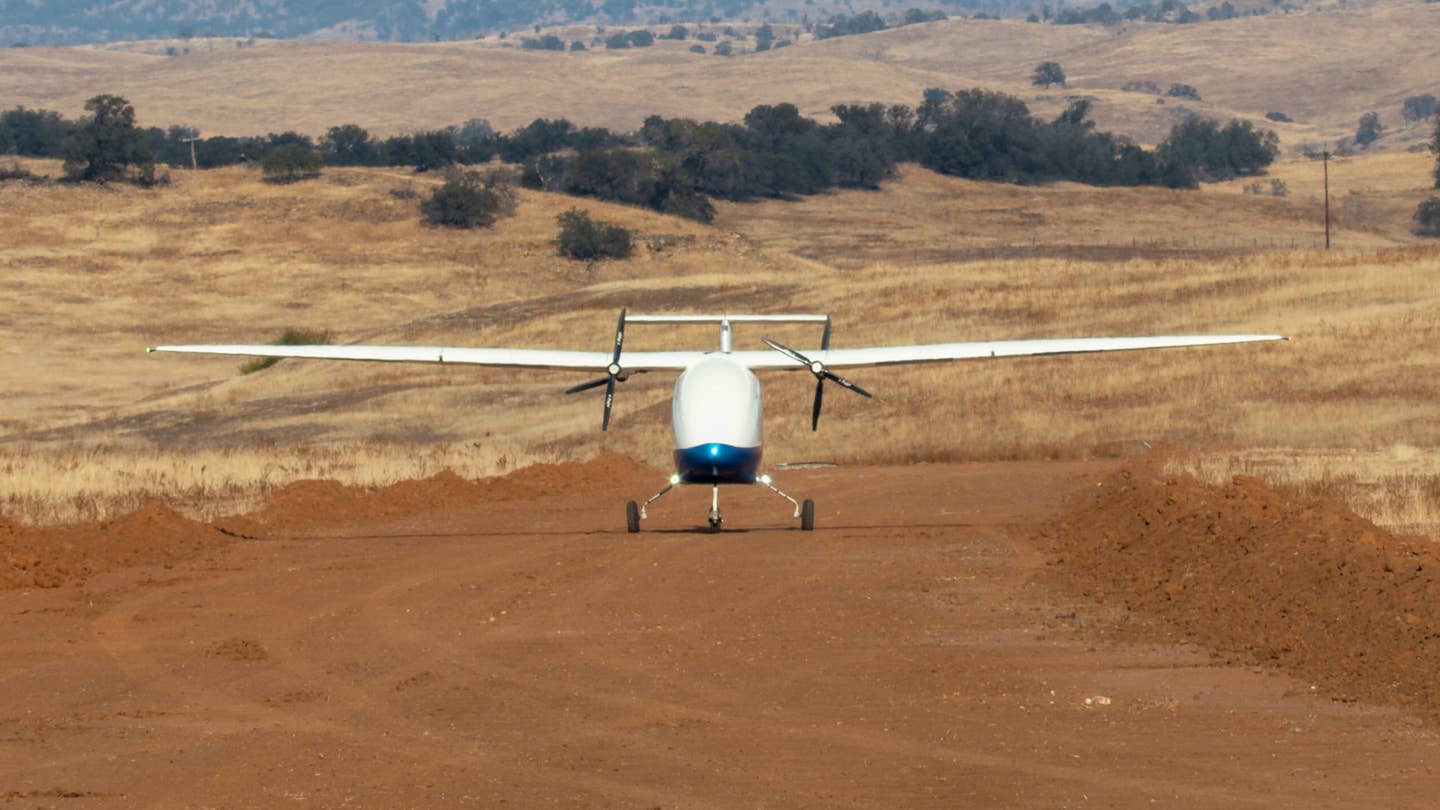Pyka, SNC Partner to Offer Massive Cargo Drone to U.S. DOD
The partners are modifying Pyka’s flagship Pelican Cargo aircraft, an uncrewed, fully electric drone, for use by DOD customers.

Pyka’s flagship Pelican Cargo drone is the world’s largest zero-emission cargo aircraft, according to the manufacturer. [Courtesy: Pyka/Sierra Nevada Corporation]
The companies behind an autonomous, all-electric, school bus-sized drone designed for contested military operations are now seeking customers within the U.S. Department of Defense.
Pyka, a manufacturer of electric uncrewed aircraft systems (UAS), on Monday partnered with aerospace and defense contractor Sierra Nevada Corporation (SNC) to introduce a variant of its flagship Pelican Cargo drone for DOD use.
“SNC has extensive experience modifying products from the Silicon Valley technology ecosystem to fit DOD requirements, and they are committed to making cutting-edge technology like Pelican Cargo available to the United States government,” said Michael Norcia, co-founder and CEO of Pyka.
The cargo version of Pelican—which also comes in a crop-spraying configuration, Pelican Spray—is the world's largest zero-emission cargo aircraft, according to Pyka.
Unveiled in January, the UAS has a massive 400-pound payload and 70 cubic feet of cargo volume, far larger than what is seen on a typical delivery drone. It has a length of about 22 feet and a 38-foot wingspan, with a range of up to 200 miles and cruise speed of 60-70 knots.
“Pyka's Pelican Cargo is unlike any other UAS solution on the market for contested logistics,” said Michael Bertman, vice president of programs at SNC. “We assessed a number of leading capabilities and concluded that the Pelican Cargo is significantly more capable than any other platform. It is the only all-electric, austere environment cargo aircraft with that kind of range, payload capacity, and cargo volume.”
Pyka and SNC together introduced RumRunner, a modified version of Pelican Cargo that also has a 400-pound payload and 200-mile range but was designed specifically for defense applications.
The UAS has four electric motors powered by triple-redundant batteries, which can be recharged within an hour or swapped out in five minutes. It flies fully autonomously using Pyka’s proprietary Flight Engine, which processes millions of inputs per second from the aircraft’s lidar, downward facing lasers, inertial measurement units, and air data booms. The system uses 3D aerial mapping and dynamic path planning to detect obstacles.
One key feature of the zero-emission design is its super-short takeoff and landing (SSTOL) capability. With a full payload, Pelican Cargo requires just 500 feet of runway to take off. According to Pyka, this enables operations with “an order of magnitude less infrastructure than previously possible.”
In addition, the drone can operate at night using GPS and laser- or radar-based navigation. It can be loaded in just five minutes, Pyka says, using a nose-loading configuration with a sliding cargo tray.
“Creating a more diverse, distributed, and survivable supply chain is expected to be the primary driver in terms of interest from the DOD,” said Bertman. “The zero-fuel component minimizes the need to forward-stage bulk fuel, which significantly reduces the logistics tail normally associated with resupply operations. This presents opportunities to increase the survivability of our service members, reduce risks to the force, and transform the way military operations have historically been conducted.”
Pyka, like many manufacturers of electric or autonomous aircraft, also has a relationship with AFWERX, the innovation arm of the U.S. Air Force. In February, it delivered the first of three Pelican Cargo aircraft, on lease to AFWERX, to New Braunfels National Airport (KBAZ) in Texas, where Air Force personnel will explore its applications for defense.
Pyka so far has precommitments on over 80 orders and options for Pelican Cargo from three launch customers in North America and Europe, including London-based Skyports Drone Services.
In March, the manufacturer secured a 110,000-square-foot corporate headquarters and production facility in Alameda, California, the site of the historic Alameda Naval Air Station. It will use the facility to design, develop, and manufacture aircraft at scale after it settles into the site later this year.
Like this story? We think you'll also like the Future of FLYING newsletter sent every Thursday afternoon. Sign up now.

Sign-up for newsletters & special offers!
Get the latest FLYING stories & special offers delivered directly to your inbox






